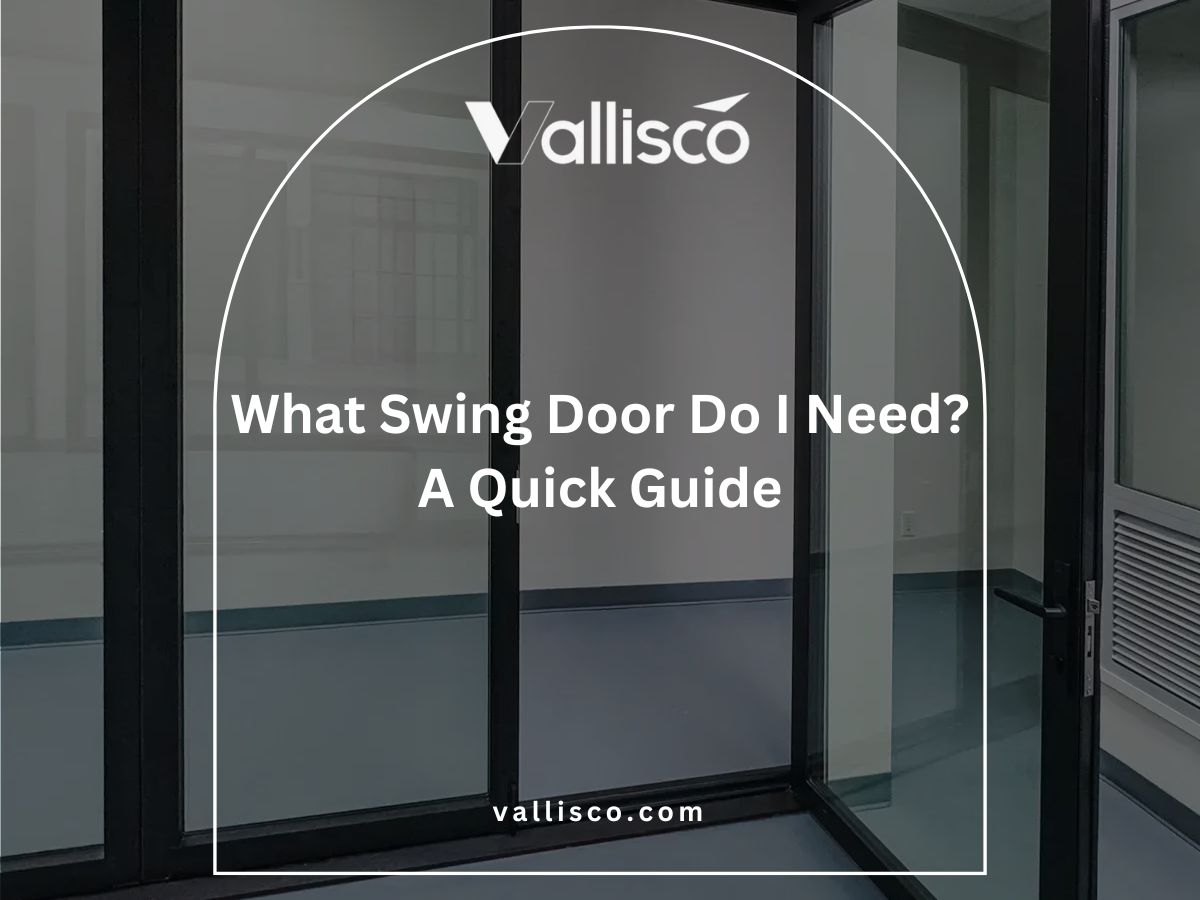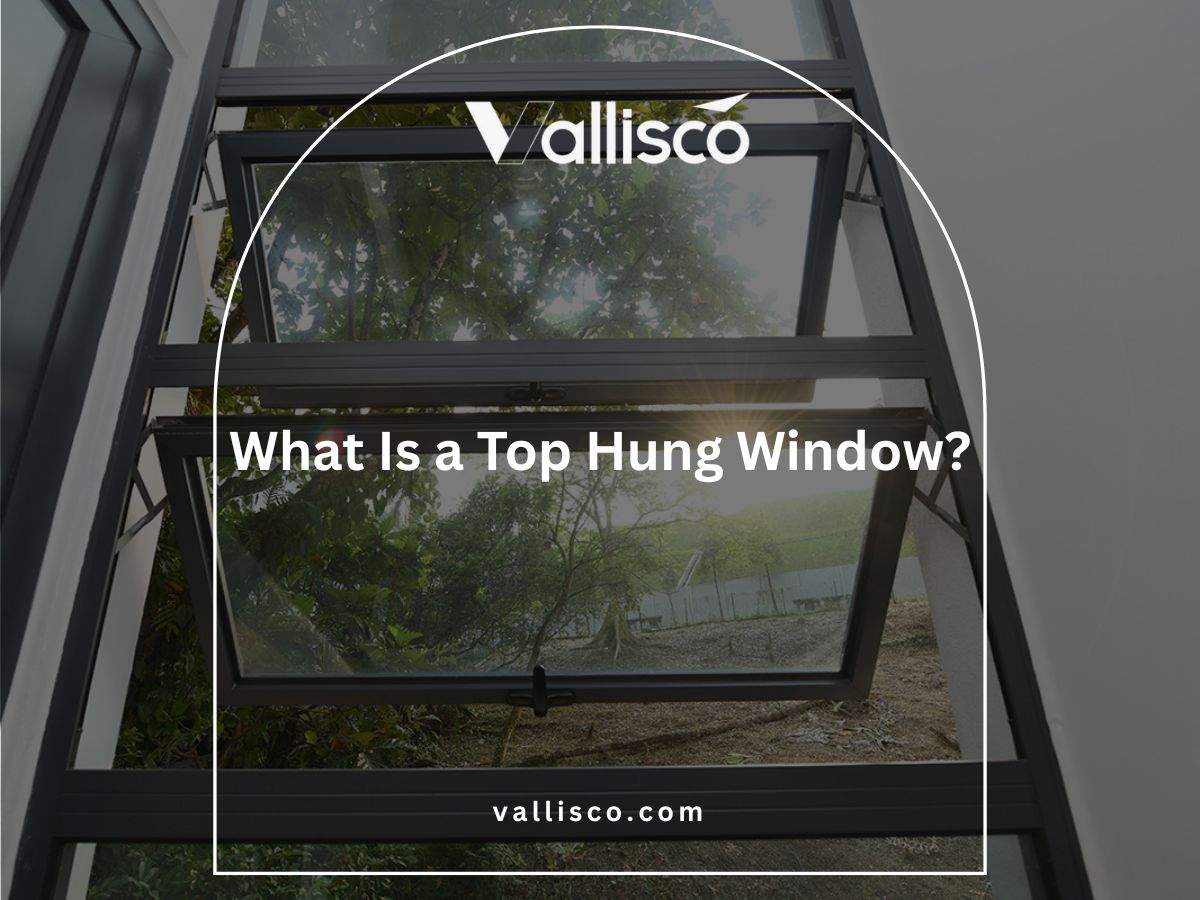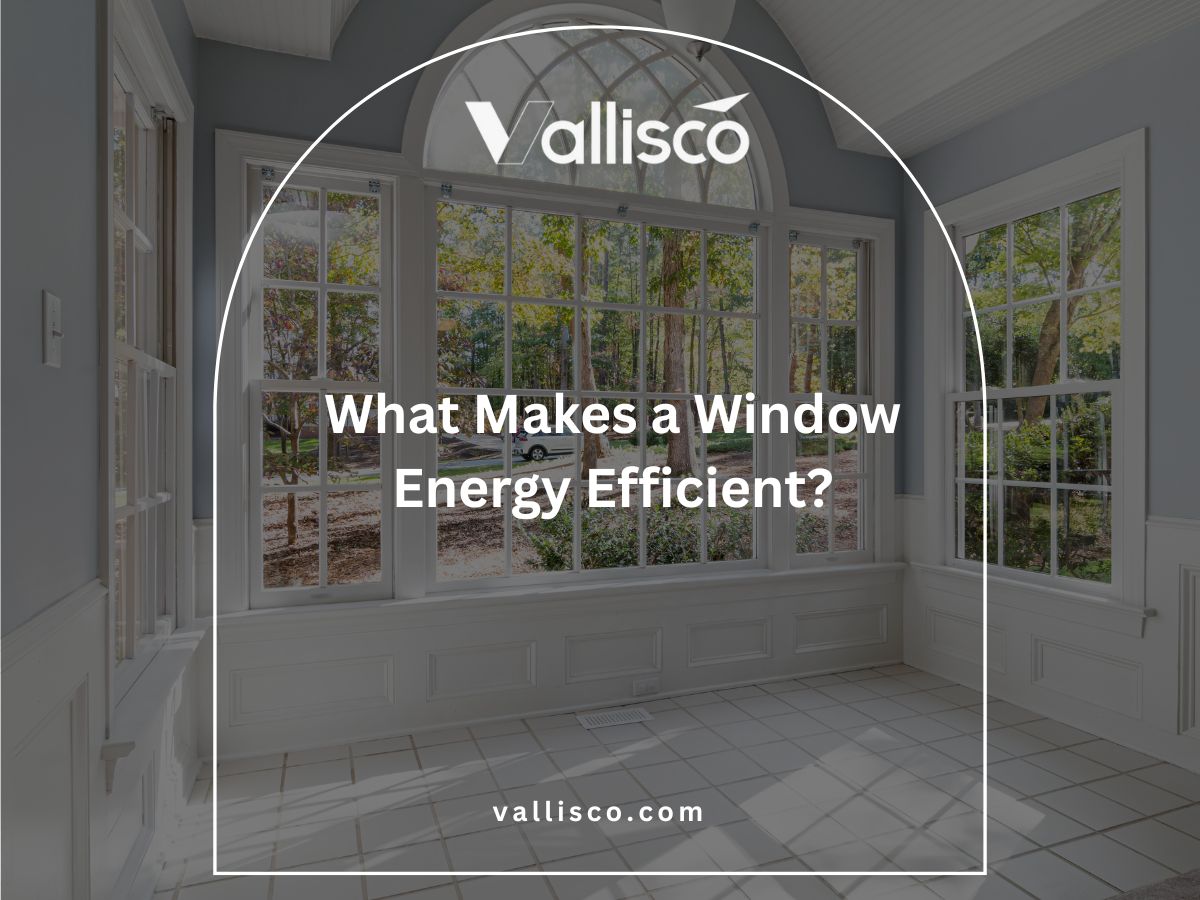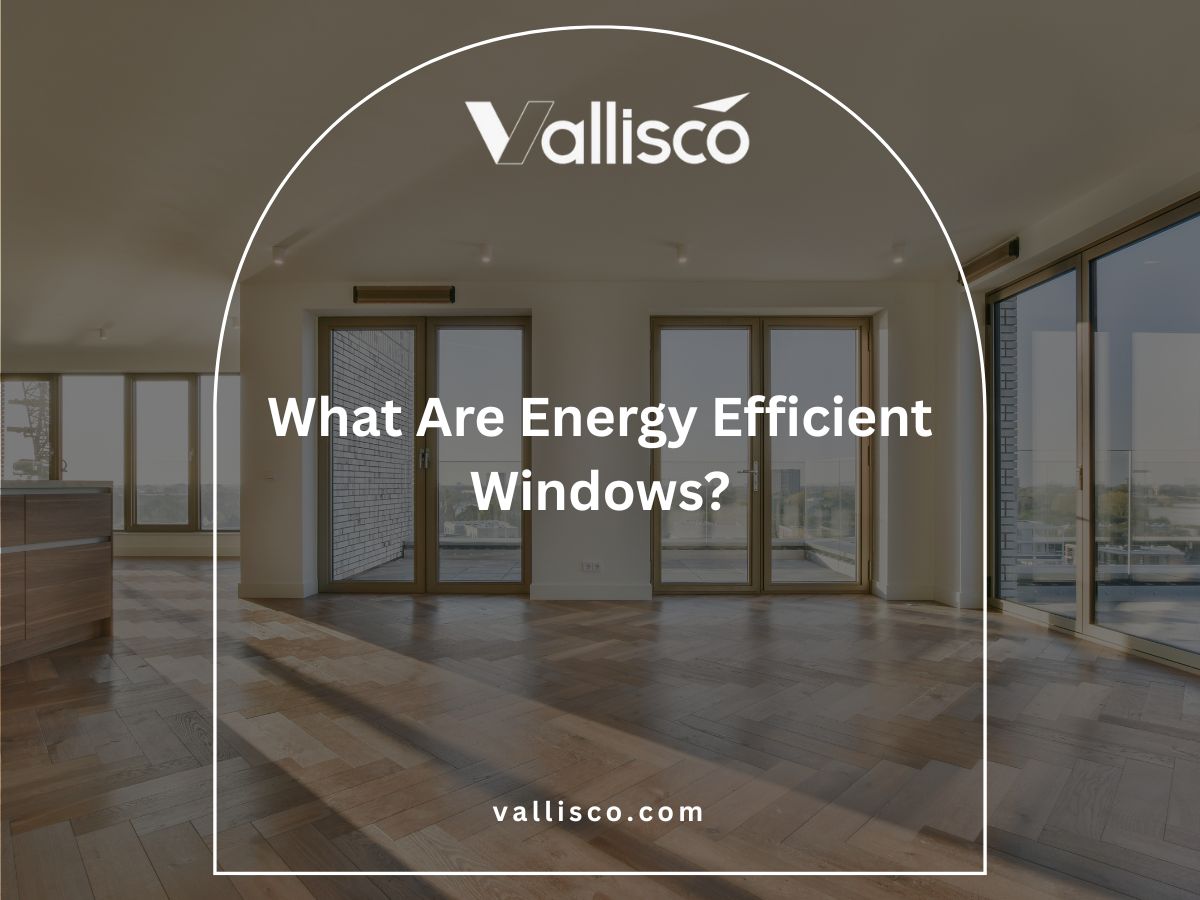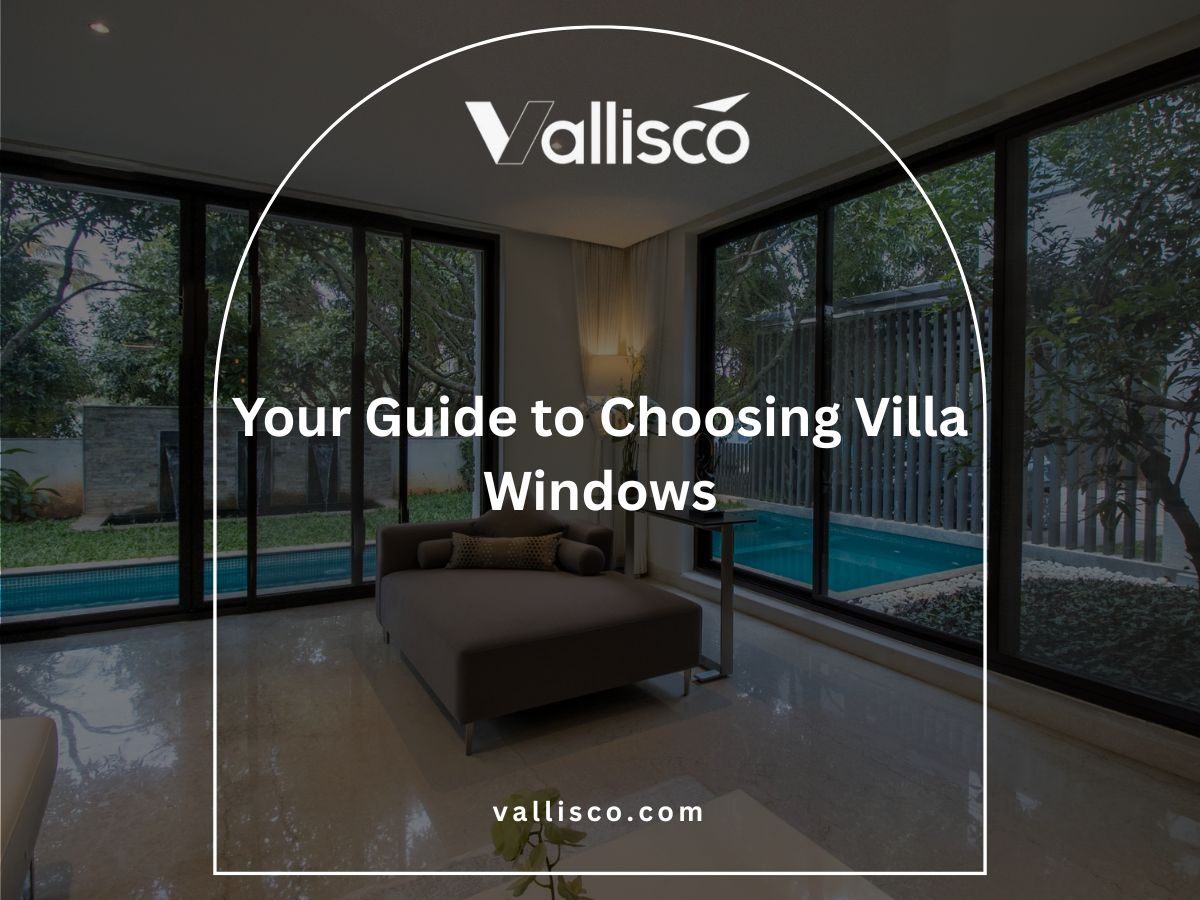A few years ago, I helped a family friend renovate a small guesthouse.
They picked a fancy wooden commercial door for the front. It looked nice at first.
Then it rained. The wood swelled. The hinges shifted. Guests had to push hard just to get inside. Some even thought it was locked.
That’s when I realized something: a door isn’t just about how it looks. It has to work in real life, with real people using it every day.
If you’re stuck trying to choose the right commercial door, I understand. There are so many types. And everyone seems to have a different opinion.
That’s why I wrote this. I’ll show you 10 kinds of commercial doors, what they’re good for, and where they fit best.
By the end, you’ll know how to pick one that makes sense for your space whether it’s a hotel, villa, greenhouse, or something else.
So let’s start!
Before we dive deep into each type, here’s a quick snapshot of what to expect.
If you’re short on time or just need a fast side-by-side view, this table gives you a feel for what works where, and why.
| Door Type | Best For | Key Features | Pros | Cons |
| Steel Doors (Hollow Metal) | Back entrances, stairwells, fire exits | Tough skin, strong core, fire-rated options | Durable, fire-resistant, low maintenance | Heavy, may rust if uncoated |
| Aluminum Glass Doors | Lobbies, inns, hotel entries | Glass panels in sleek aluminum frames | Stylish, bright, works with access systems | Low insulation, shows smudges |
| Wood Veneer Doors | Guestrooms, offices, villas | Solid core with wood finish, stain/paint options | Elegant, matches décor, various styles | Not moisture-proof, scratches easily |
| FRP Doors | Kitchens, greenhouses, coastal areas | Fiberglass skin with resin core | Strong, moisture-proof, low upkeep | Expensive, harder to find |
| Automatic Sliding Doors | Hotels, busy entries, public areas | Motion sensor, motorized tracks | Touch-free, ADA-friendly, sleek look | Needs power, higher installation cost |
| Roll-Up Steel Doors | Storage rooms, garages, service entries | Rolls into overhead coil | Space-saving, secure, weather-resistant | Noisy, not decorative |
| Fire-Rated Doors | Stairwells, corridors, service areas | Fire-tested with labels and seals | Code compliant, life-saving, tough materials | Must be installed properly |
| PVC Strip Curtains | Kitchens, cold rooms, greenhouses | Flexible strips hanging from a rail | Low-cost, quick access, keeps bugs out | Gaps, yellows or cracks over time |
| Soundproof Acoustic Doors | Hotels, villas, conference rooms | Heavy sealed core, acoustic layers | Quiet, improves privacy, clean design | Expensive, needs a strong frame |
| Dutch Doors | Offices, reception, garden spaces | Top and bottom halves open separately | Airflow, charm, partial access control | Draft risk, low security |
Feeling clearer now?
Let’s dive deeper into each type and see which door truly opens the right path for your space.
1. Steel Doors (Hollow Metal Doors)
Best For: Back entrances, stairwells, utility rooms, fire exits
Steel doors, also known as hollow metal doors, are made by wrapping steel sheets around a solid or honeycomb core. They’re built to handle rough use, heavy traffic, and harsh weather. You’ll often find them in places where function and strength matter more than looks.
Core Features
- Steel Skin with Reinforced Core: The outer shell is made of steel, while the inside is filled with steel stiffeners or honeycomb material. This gives the door its strength without making it overly thick.
- Impact and Weather Resistance: These doors are made to handle bumps, hits, and bad weather. They don’t warp in humidity or buckle under pressure.
- Long-Term Performance: Designed for constant daily use in busy areas. They keep working even after years of hard service.
Pros
- Durable: Can cause a lot of physical stress without damage. Ideal for areas where doors get slammed or pushed often.
- Fire-Rated Options: Many models can block fire and smoke for 20 to 180 minutes. Helps meet safety rules in commercial spaces.
- Low Maintenance: Once installed and sealed properly, they need very little upkeep. Occasional cleaning and touch-ups are usually enough.
Cons
- Very Heavy: Their weight can make them harder to install. Might need reinforced frames or extra labor.
- Rust-Prone if Unprotected: If scratched or left uncoated, they can start to rust. Especially true in damp or coastal areas.
Where It Works Best
- Commercial Corridors: Great for places like hotels, schools, and offices with heavy daily use.
- Service Areas: Perfect for boiler rooms, janitor closets, and staff entrances.
- Fire Exit Doors: Often required in stairwells and emergency exits to meet fire codes.
I once replaced a swollen wooden door at the back of a small hotel with a steel one. Three years later, it still looked almost new, even with daily use by staff and supply deliveries. That’s when I realized how much long-term value a properly chosen steel door can bring.
Tips for Buyers
If you’re installing the door outside, ask for a galvanized or powder-coated version to protect against rust. These coatings help the door last longer in humid or coastal environments. Also, check if you need a fire-rated door and get the certification documents before buying. Lastly, make sure your wall frame and hinges can handle the door’s weight this step makes a big difference in long-term performance.
If your space needs a tough door that lasts through constant use, Vallisco offers durable options with the finishes and certifications needed for commercial and high-traffic areas. It’s a reliable pick for demanding environments.
2. Aluminum Glass Doors
Best For: Main entrances to hotels, inns, or office-style villas
Aluminum glass doors are made by framing large glass panels with lightweight aluminum. They offer a clean, modern appearance and allow natural light to pass through. These doors are commonly used at main entrances where both looks and visibility matter.
Core Features
- Aluminum Frame with Glass Panels: The frame provides structure without adding much weight. The glass inserts let in sunlight and create an open feel.
- Compatible with Door Closers or Automatic Systems: Often used with access control or motion sensors. These additions make entry and exit smooth for visitors.
- Customizable Appearance: Available in different frame finishes and glass types. You can pick clear, frosted, tinted, or laminated glass depending on your space.
Pros
- Modern Appearance: The sleek design improves the front-facing look of a building. Great for businesses that want to appear clean and welcoming.
- Natural Light: These doors brighten entryways and save on lighting costs. They also make indoor spaces feel more open.
- Access Control Friendly: Works well with electronic locks, swipe systems, and building security setups. Good choice for offices or commercial properties.
Cons
- Lower Insulation: Standard glass does not block out noise or hold in temperature well. This could affect heating or cooling in certain climates.
- Frequent Cleaning: Glass collects fingerprints, dust, and smudges quickly. Needs regular wiping to keep it clear and attractive.
Where It Works Best
- Lobbies and Entry Areas: Perfect for hotels, reception spaces, or commercial buildings.
- Showrooms or Office Entrances: Offers a professional look that fits retail or administrative buildings.
- Villas or Guesthouses: A stylish option if your property leans toward a modern design.
A while back, I helped redesign the front of a small boutique hotel. The old wooden doors looked heavy and out of place. Once we switched to aluminum glass doors, the whole entrance felt brighter and more inviting and bookings actually increased after that.
Tips for Buyers
If you’re in a warm or busy area, consider double-glazed or laminated glass to reduce heat and noise. Also, ask about tempered safety glass if your door faces a street or heavy foot traffic. For coastal properties, check if the aluminum frame has a finish that resists salt air. And if your building gets a lot of sun, go for tinted or UV-coated glass to cut down glare and fade on indoor furniture.
If you’re looking for a door that’s modern, bright, and welcoming, aluminum glass is a solid choice for your front entrance.
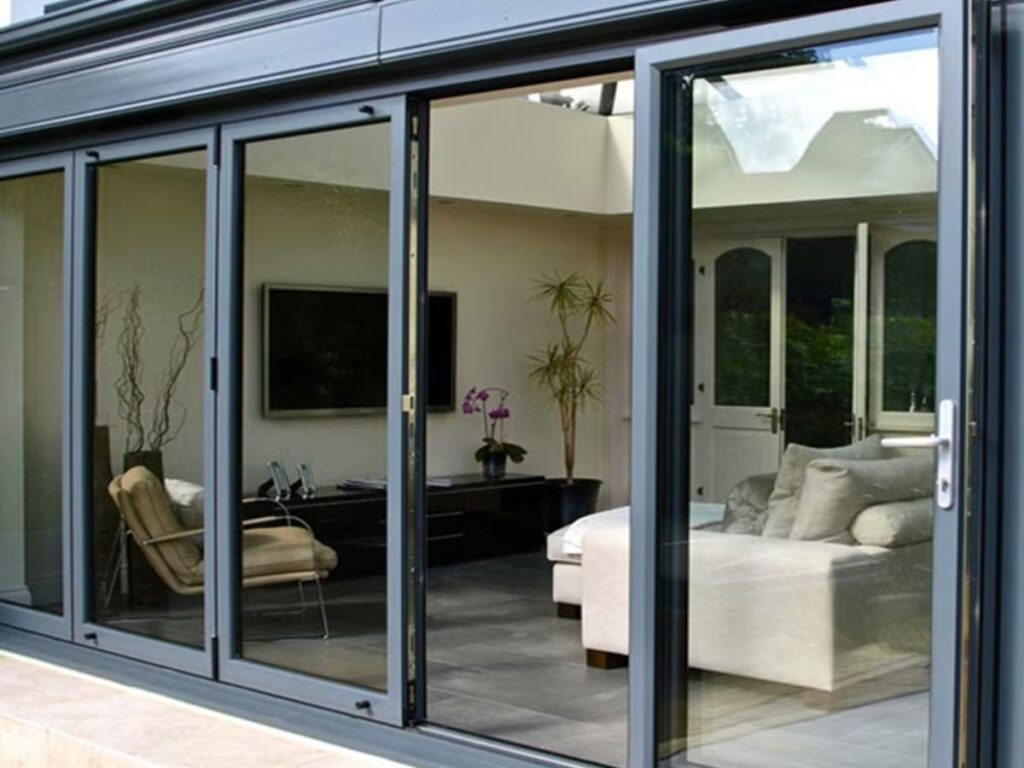
3. Wood Veneer Commercial Doors
Best For: Guestroom entrances, meeting rooms, villas
Wood veneer commercial doors are made by covering a solid or composite core with a thin layer of real wood. This gives you the natural look of wood without the high cost or weight of solid wood doors. They’re popular in interior spaces where appearance matters just as much as function.
Core Features
- Real Wood Finish Over a Core: A thin wood sheet is pressed onto a stable core, often made of particleboard or mineral-filled material. This makes the door both attractive and more affordable than solid hardwood.
- Custom Stain or Paint Options: Veneer can be stained or painted to match nearby trim, walls, or furniture. You get design flexibility while keeping a professional look.
- Lighter Weight: Easier to install and move compared to solid wood. This also puts less stress on hinges and door frames.
Pros
- Elegant Appearance: Adds a classic, upscale feel to guest-facing rooms. Works well in villas, hotels, and executive offices.
- Design Match: You can align the door’s finish with furniture or architectural details. It gives the room a unified and polished feel.
- Wide Style Range: Comes in many wood types like oak, walnut, maple, or cherry. You can choose one that fits your space’s personality.
Cons
- Sensitive to Moisture: Not the best choice for bathrooms, kitchens, or anywhere with humidity. Veneers may bubble or peel over time.
- Scratch-Prone Surface: While the look is rich, the finish can wear down in high-traffic spots. Needs gentle cleaning and regular touch-ups.
Where It Works Best
- Guest Rooms and Suites: Creates a warm and welcoming feel.
- Lounge or Conference Areas: Adds formality and comfort to business or gathering spaces.
- Residential Villas: Fits right into traditional or high-end interiors.
Years ago, I helped choose doors for a family-owned inn. They wanted each room to feel cozy without overspending. We used oak veneer doors, stained to match the hallway trim, and they still look great today with just basic care.
Tips for Buyers
Ask the supplier about the thickness of the veneer—thicker layers tend to last longer and hold up better to cleaning. If the door is used in a hallway or other active area, ask about scratch-resistant finishes. Also, avoid placing these near bathrooms or kitchens where moisture might cause the veneer to lift. And always check for wood grain consistency if you’re ordering multiple doors for connected spaces.
If you want warmth and style in your guest areas without going over budget, a wood veneer door is a smart option.
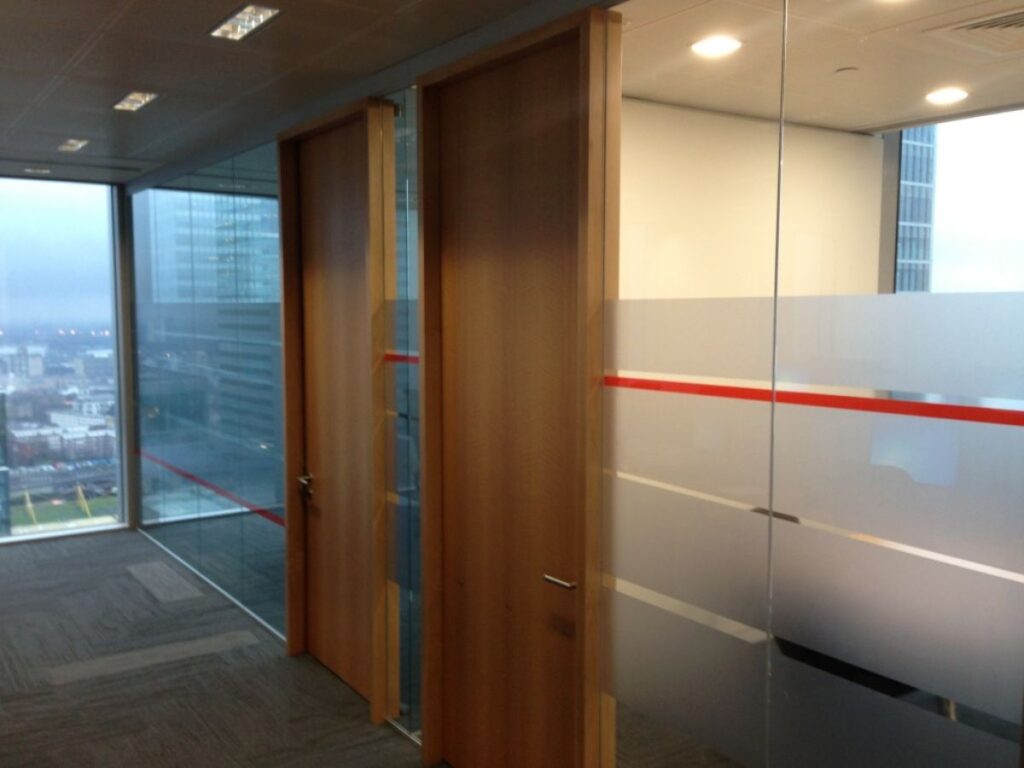
4. Fiberglass Reinforced Polyester (FRP) Doors
Best For: Utility spaces, chemical rooms, coastal hotels, greenhouses
Fiberglass Reinforced Polyester, or FRP, doors are made with fiberglass skins bonded to a solid core using strong resins. These doors are designed for environments that deal with moisture, chemicals, or constant wear. They work well in places where a standard metal or wood door would break down over time.
Core Features
- Fiberglass Skin Over Solid Core: The outer fiberglass layer is molded and bonded to a strong inner material, often foam or a mineral core. This creates a durable surface that won’t dent or peel.
- Resistant to Moisture and Chemicals: FRP handles wet, corrosive, and messy conditions with ease. It won’t rust, swell, or rot like other door materials.
- Low Maintenance Finish: Often comes pre-finished from the factory. You won’t need to paint or stain it on site.
Pros
- Durable in Extreme Conditions: Performs well in areas with constant moisture or chemical exposure. It stays stable even in wet, hot, or salty environments.
- Lightweight and Strong: Easier to install than solid wood or metal, but still built to last. Works well in places where doors are opened frequently.
- Won’t Rust or Rot: Ideal for coastal properties or greenhouses where humidity and salt can damage traditional doors.
Cons
- Higher Upfront Cost: Costs more than standard metal or wood options. But you may save on repairs and replacements in the long run.
- Limited Availability: Not always stocked by general suppliers. You might need to order through specialty dealers.
Where It Works Best
- Pool and Kitchen Areas: Handles water, steam, and cleaning chemicals without damage.
- Greenhouses and Coastal Hotels: Resists rust and corrosion in salty or humid air.
- Utility and Chemical Storage: Withstands spills and splashes without staining or swelling.
One of my clients had repeated issues with rusted metal doors at the back of their hotel kitchen. After switching to FRP, they stopped dealing with replacements every other year. The new door still looks clean, even with daily abuse from carts and mops.
Tips for Buyers
Ask for pre-finished doors to avoid the hassle of on-site painting. You can choose from smooth or textured surfaces depending on how much wear you expect. Also, check the core material, some are better for fire resistance or sound blocking. If you’re ordering for a wet area, make sure the edges are sealed to stop water from getting in over time.
If your space deals with water, chemicals, or harsh conditions, FRP doors are one of the toughest choices you can make.
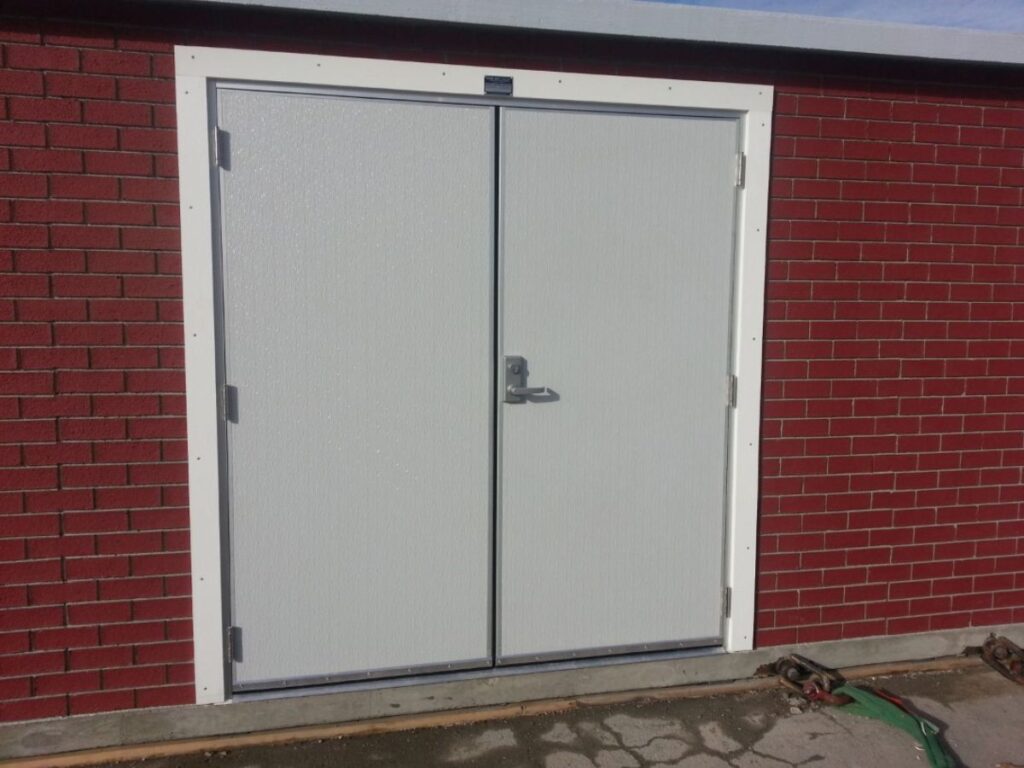
5. Automatic Sliding Doors
Best For: Hotel entrances, large B&Bs, busy commercial spots
Automatic sliding doors open and close using sensors, tracks, and a motor system. When someone approaches, the sensor detects motion and signals the door to slide open. These doors are common in busy areas where hands-free entry helps with flow, accessibility, and comfort.
Core Features
- Sensor-Activated Operation: Uses motion detectors or infrared sensors to open automatically. This makes it easy for people carrying bags or pushing carts.
- Track and Motor System: Doors slide along a top or bottom track powered by a small motor. The system is smooth, fast, and typically quiet.
- ADA-Friendly Design: Helps meet accessibility standards by removing the need to push or pull. Ideal for public buildings or guest spaces.
Pros
- Hands-Free Entry: Great for high-traffic areas where convenience matters. Guests and staff can walk in and out without stopping.
- Modern Appearance: Creates a clean, sleek entrance that makes a good first impression. Often used in hotels, offices, and retail buildings.
- Improves Flow: Helps reduce congestion at entry points. Also lowers contact during cold and flu seasons.
Cons
- Needs Power Supply: Requires electrical wiring and a steady power source. May also need a backup power option in case of outages.
- Ongoing Maintenance: Sensors and motors can wear out or misalign. Needs regular checks to keep working smoothly.
Where It Works Best
- Hotel and Lobby Entrances: Offers smooth and stylish access to public areas.
- Medical or Retail Spaces: Keeps doors clean and easy to pass through without contact.
- Large B&Bs or Multi-Unit Villas: Helps guests move in and out with luggage or strollers.
A few years ago, I worked on a small hotel renovation. The owners wanted something that felt upscale but practical. We installed automatic sliding doors at the main entrance, and guests started complimenting the convenience almost immediately.
Tips for Buyers
Before choosing this door type, check your building’s electrical capacity. You’ll need wiring for the motor and possibly a battery backup if local codes require it. Ask the installer about safety sensors that stop the door if someone is in the way. If the entrance gets strong wind or sunlight, you may also want to ask about weather sensors and glass tinting.
If you want a door that looks sharp and makes access easier for everyone, automatic sliding doors are worth considering.
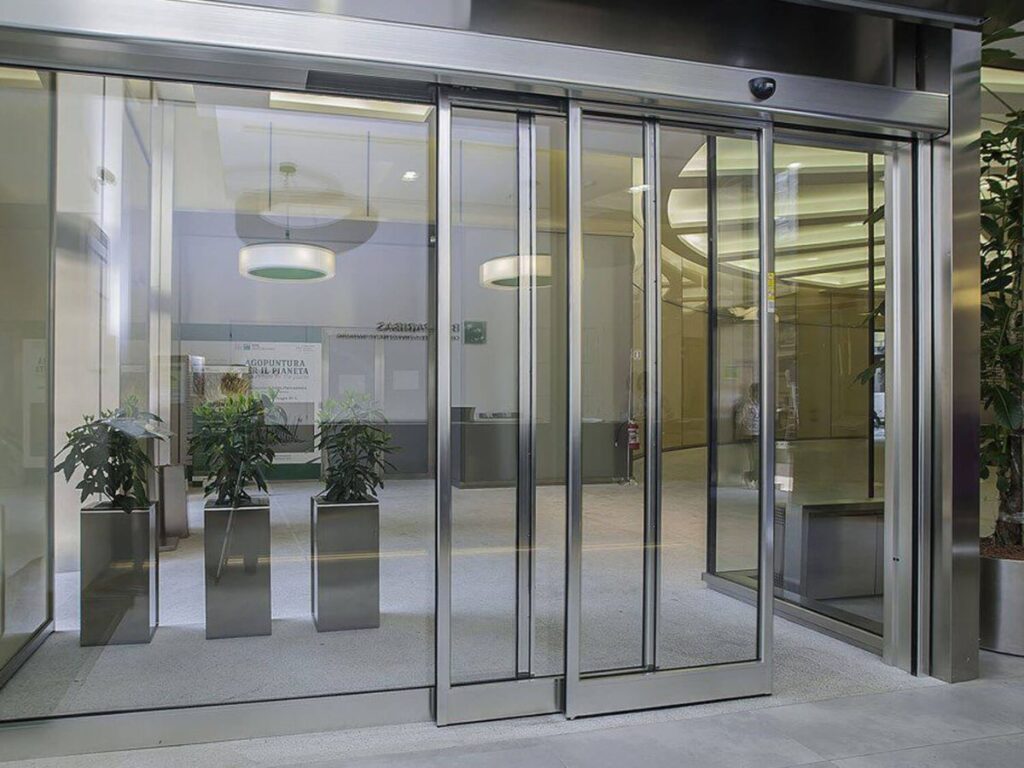
6. Roll-Up Steel Doors (Overhead Coiling Doors)
Best For: Storage areas, garages, service entrances
Roll-up steel doors, also called overhead coiling doors, open vertically and roll into a coil above the opening. This design saves space and keeps the area around the doorway clear. These doors are made of horizontal slats and are often used where floor space is limited or security is a priority.
Core Features
- Coiling Design: The door wraps into a tight coil above the opening. This clears the floor and ceiling area and keeps everything compact.
- Manual or Motor Operation: Can be opened by hand or powered by a motor. The motorized version is common in larger commercial spaces.
- Steel Construction: Built from interlocking steel slats. Provides strong protection against impact and forced entry.
Pros
- Saves Space: No swinging motion needed, so it works well in tight or cluttered areas. Great for busy service zones.
- Strong and Secure: The steel slats are hard to break through. Helps protect storage areas from theft or damage.
- Weather Resistant: When sealed properly, these doors keep out wind, dust, and rain. Suitable for outdoor or indoor use.
Cons
- Not Decorative: These doors all function. They don’t add much to a building’s appearance.
- Can Be Noisy: Opening and closing may produce a loud, metallic sound. This can be distracting in quiet areas.
Where It Works Best
- Warehouses and Garages: Helps secure inventory or equipment while keeping floor space clear.
- Loading Docks and Back Entrances: Withstands heavy daily use from carts, trucks, and deliveries.
- Shops and Service Areas: Offers after-hours protection for storefronts or storage rooms.
A client once asked me for a door that didn’t swing open into a tight loading bay. I suggested a roll-up steel door, and it turned out to be the perfect fit. Years later, they’ve never had to replace it and still use it daily with no complaints.
Tips for Buyers
Ask about insulated models if your space needs climate control. Insulated roll-up doors help regulate temperature in storage areas and reduce noise. Also, check the motor type if you’re going electric—some models are better for frequent use. Finally, consider adding bottom seals or weather strips if the space is exposed to wind or rain.
If space is tight and security is a must, a roll-up steel door is one of the most practical choices you can make.
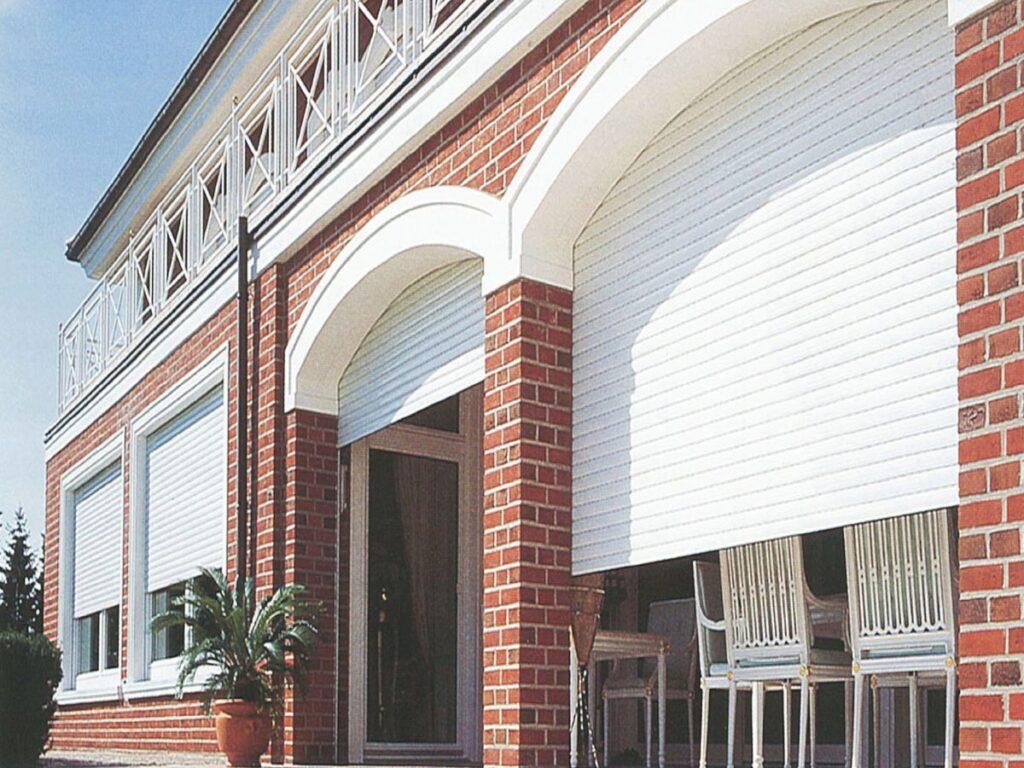
7. Fire-Rated Doors
Best For: Stairwells, corridors, between units and service areas
Fire-rated doors are made to slow down the spread of fire and smoke during an emergency. These doors are tested and certified to hold back flames for a set period—usually between 30 to 180 minutes. They’re often required by building codes in places where people need extra time to exit safely.
Core Features
- Fire-Resistant Core Materials: Built with special materials like mineral cores, steel, or fire-rated wood. These components resist heat and keep flames from spreading quickly.
- Certified Fire Ratings: Labeled with how long the door can block fire, such as 60 or 90 minutes. The rating must match the building’s safety plan and local codes.
- Smoke Seals and Fire Hardware: Often comes with intumescent seals and fire-rated hinges or closers. These parts expand in heat to seal off the gap and help contain smoke.
Pros
- Life Safety Protection: Slows down fire and smoke so people can exit the building. Can save lives during emergencies.
- Meets Code Requirements: Often required in commercial, multi-unit, or public buildings. Helps avoid penalties during inspections.
- Durable Materials: Usually built from steel or solid-core wood. These doors can handle regular use even outside of emergencies.
Cons
- Must Be Installed Properly: Needs the right frame, hardware, and gap spacing. If installed wrong, it won’t pass inspection.
- Not Always Stylish: Function is the focus here. Most fire-rated doors are plain in design.
Where It Works Best
- Exit Routes and Stairwells: Helps create safe escape paths for building occupants.
- Hallways Between Units: Required in many multi-room buildings like hotels or villas.
- Service Room Entrances: Used for boiler rooms, electrical closets, or laundry areas.
I once visited a small hotel that skipped installing fire-rated doors in the basement laundry. They failed their inspection and had to shut down for three weeks. After new doors were installed and tested, they passed no issues since then.
Tips for Buyers
Before you buy, ask for written proof of the fire rating. Look for labels from approved testing agencies like UL or Intertek. Make sure the door frame, hardware, and seal kit are all rated too every part matters. And if you’re not sure what rating you need, check with your local building inspector or fire marshal.
If you’re adding doors to a shared or public building, fire-rated doors aren’t just a good idea they’re often a requirement.
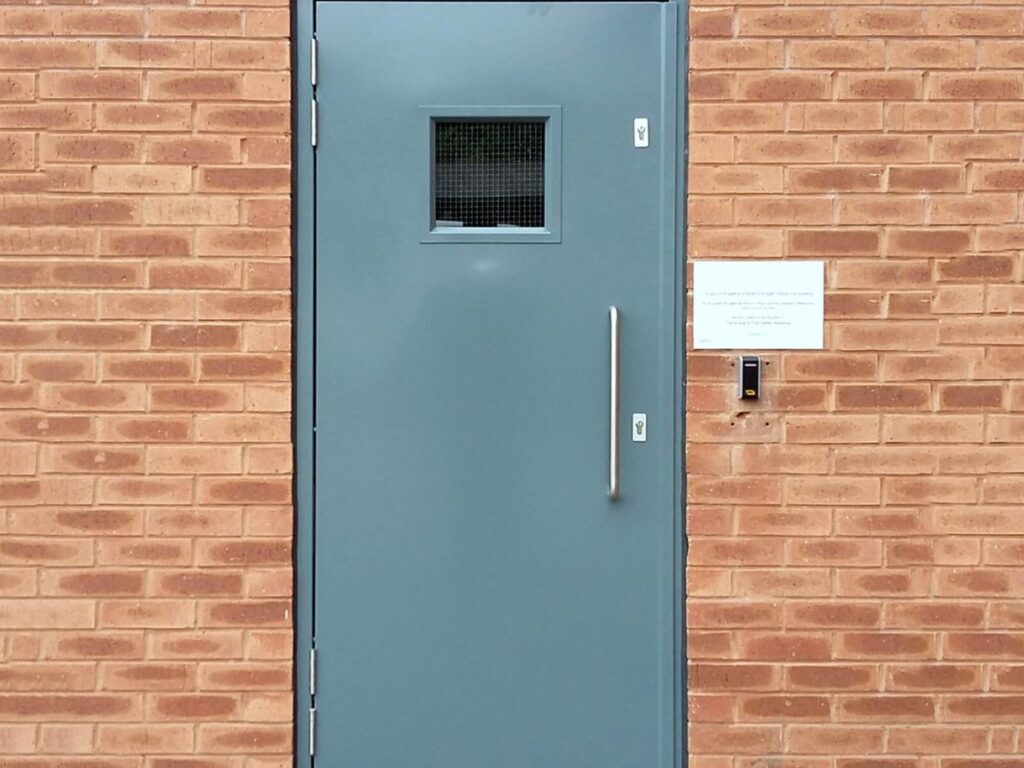
8. PVC Strip Curtains / Flexible Doors
Best For: Greenhouses, kitchens, cold storage, maintenance zones
PVC strip curtains are made of overlapping flexible plastic strips that hang from a mounted rail. They let people or carts pass through without needing to open or close a door. These are used in areas where keeping air, bugs, or dust out matters more than looks.
Core Features
- Clear or Colored PVC Strips: Made from soft, see-through plastic. The strips allow light and visibility while forming a basic barrier.
- Walk-Through or Drive-Through Access: Opens easily with a push and falls back into place. Great for fast-paced work areas or temporary setups.
- Quick to Install: Usually mounted on a simple metal rail. Can be added to doorways, walk-ins, or open frames in a short time.
Pros
- Low Cost Option: One of the most affordable door solutions. Works well if you need something fast and cheap.
- Keeps Bugs and Dust Out: Acts as a light seal against flying insects or airborne particles. It also helps contain cold or warm air.
- No Hands Needed: You can walk or roll a cart through without touching anything. This keeps the space cleaner and more efficient.
Cons
- Not Fully Sealed: Leaves small gaps between strips. Won’t stop all air or sound movement.
- Can Wear Over Time: Strips may yellow, crack, or curl at the ends. Needs replacement every few years.
Where It Works Best
- Food Prep and Storage Areas: Helps control air temperature while allowing easy access.
- Greenhouses or Utility Rooms: A good match for humid spaces or dirt-prone zones.
- Maintenance and Back Rooms: Add a basic divider without slowing things down.
Years ago, I worked with a greenhouse owner who struggled to keep warm air in while letting workers move freely. We added PVC curtains to the back entry, and they made an immediate difference. Workers stayed warm, and the plants did too.
Tips for Buyers
Choose USDA-grade PVC if you’re using these near food or prep areas. For cold storage, ask for freezer-rated strips that stay flexible in low temperatures. You can also order wider or thicker strips for windier spots. And don’t forget to check the mounting height—hanging them too high can leave large gaps near the ground.
If you need a quick, simple barrier that keeps air in and bugs out, PVC strip curtains are a solid, low-cost solution.
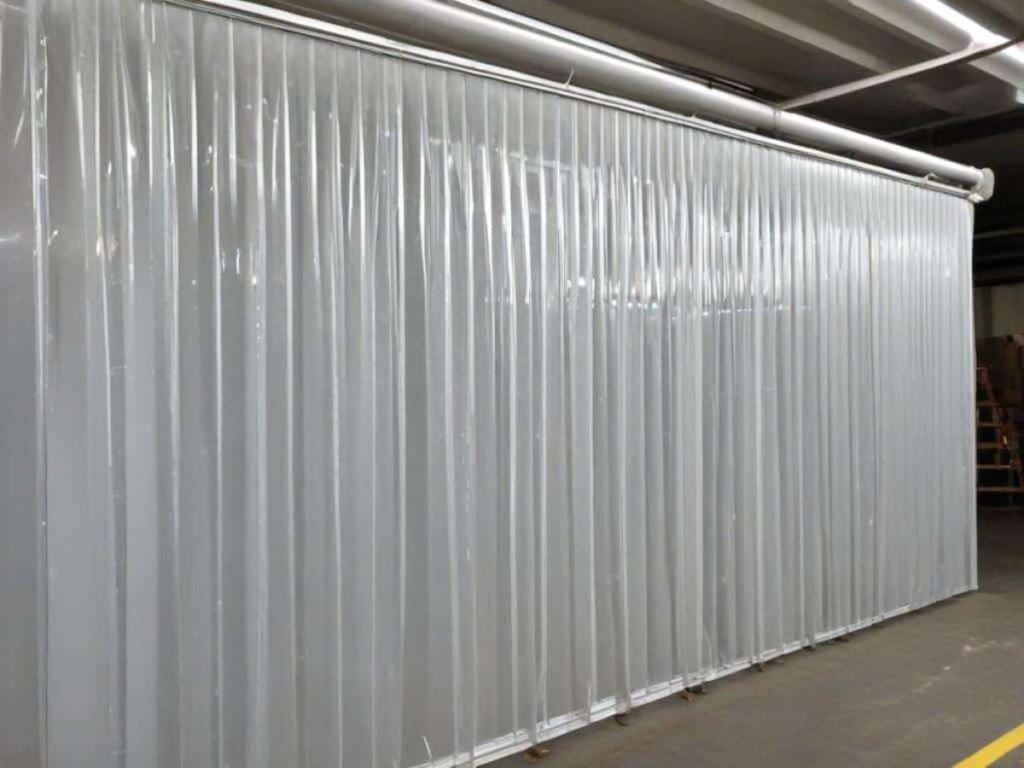
9. Soundproof Acoustic Doors
Best For: Conference rooms, hotel rooms, villas near roads
Soundproof acoustic doors are designed to block or absorb sound between rooms or from the outside. These doors use dense materials, sealed edges, and special construction to stop noise from passing through. They are commonly used in spaces that require privacy, quiet, or noise control.
Core Features
- High-Density Core Materials: Built with layers of dense wood, steel, or sound-absorbing foam. These layers trap and reduce sound waves from moving through.
- Sealed Frames and Edges: Comes with gaskets and drop seals to close gaps tightly. This keeps sound from leaking around the door.
- Tested STC Rating: Measured using a Sound Transmission Class (STC) score. Higher ratings mean better sound control.
Pros
- Improves Comfort and Privacy: Keeps loud sounds from entering or leaving a room. Great for guest areas or meeting rooms.
- Helps With Focus: Reduces distractions in workspaces, schools, or offices. Creates a calmer environment.
- Professional Look: Often finished with wood veneer or laminate. You don’t have to sacrifice style for quiet.
Cons
- Heavy and Thick: These doors weigh more than standard ones. They may need stronger hinges and support frames.
- Higher Cost: Materials and design make them more expensive. But the results are noticeable and often worth it.
Where It Works Best
- Hotels and Villas: Keeps street noise or hallway sound out of guest rooms.
- Offices and Studios: Good for spaces that need silence or reduce echo.
- Meeting or Exam Rooms: Useful in schools or training centers where quiet matters.
I remember a villa near a busy road that used regular doors in the bedrooms. Guests complained about traffic noise every night. Once they switched to acoustic doors, the reviews started mentioning how peaceful the rooms felt.
Tips for Buyers
Check the STC rating before you buy. For bedrooms or meeting rooms, aim for at least STC 40 or higher. Make sure the installer seals every gap around the door, especially along the bottom. You can also ask for automatic drop seals that lower when the door closes. These small details make a big difference in performance.
If quiet and comfort are important to your space, soundproof doors can turn a noisy room into a peaceful one.
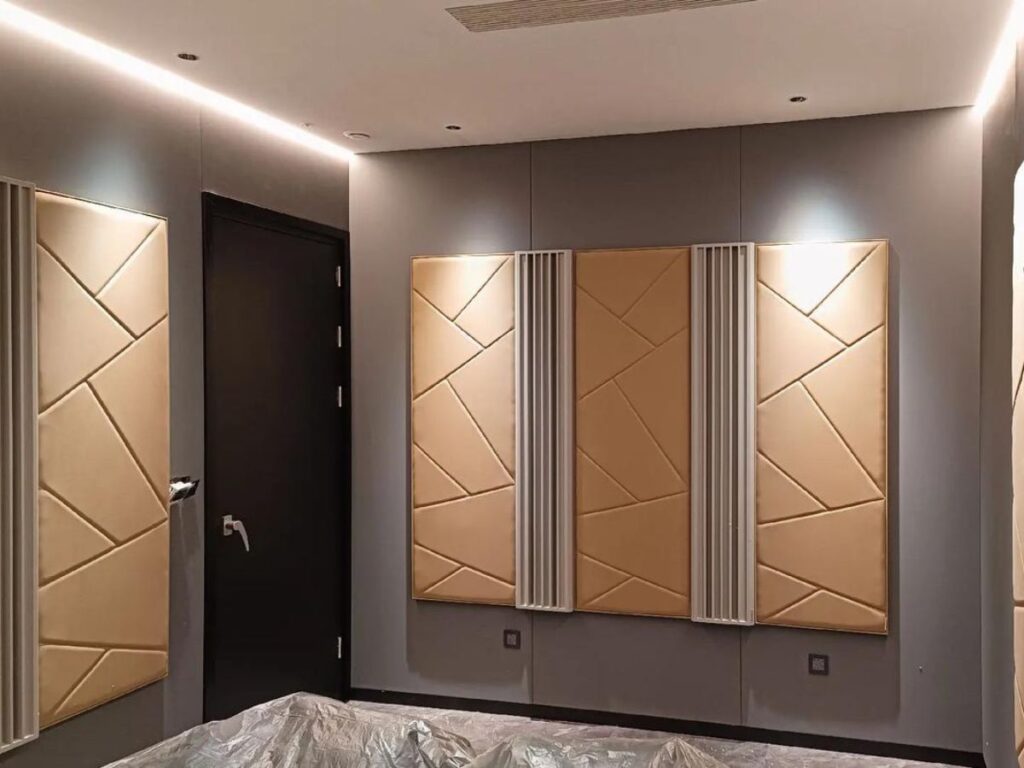
10. Dutch Doors
Best For: Offices, reception areas, garden spaces
Dutch doors are split horizontally, so the top and bottom halves can open separately. This lets you keep the bottom closed while opening the top for airflow, communication, or visibility. They’ve been around for centuries, but still serve a purpose in modern homes, inns, and informal workspaces.
Core Features
- Two Independent Door Halves: Opens as a single unit or in 2 parts. Great for controlling movement while staying connected to the other side.
- Secure Latch Between Halves: Allows the door to function as a single solid piece when needed. You can also open just the top without opening the full frame.
- Traditional or Modern Styles Available: Often comes in wood, but some newer designs use fiberglass or metal. You can match it with the overall theme of your space.
Pros
- Airflow Without Full Access: Lets in breeze or light while keeping pets, children, or supplies inside. Work well in homes or smaller businesses.
- Casual and Welcoming Look: Adds charm and character to a space. Feels less formal than a full solid door.
- Functional for Communication: Good for reception desks, nurseries, or garden rooms where you want visibility and interaction.
Cons
- Not Ideal for Security: Offers less protection than solid doors. The latch between halves can be weaker.
- Draft Risk: Can let in air, bugs, or dust when the top is open. Not the best choice for exposed entries.
Where It Works Best
- Reception and Office Areas: Useful when you want to keep a barrier but still talk to others.
- Garden and Outdoor Rooms: Fits the relaxed feel of greenhouses or hobby spaces.
- Family Villas or Inns: Add charm while allowing air and light to pass through shared areas.
One of my clients wanted a door for their back office that could stay closed for privacy but still let them chat with visitors. A Dutch door gave them exactly what they needed. It also added a friendly touch to the room that matched the rest of the space.
Tips for Buyers
If you’re using a Dutch door indoors, look for one with a strong middle latch that keeps both halves secure when needed. For outdoor use, pick materials that can resist moisture and warping, like treated wood or fiberglass. You might also want a screen in the top half if airflow is important, but you want to keep insects out. And don’t forget to check the hardware hinges and latches need to handle extra weight.
If you want a door that’s both charming and functional, a Dutch door can bring personality and practicality to your space.
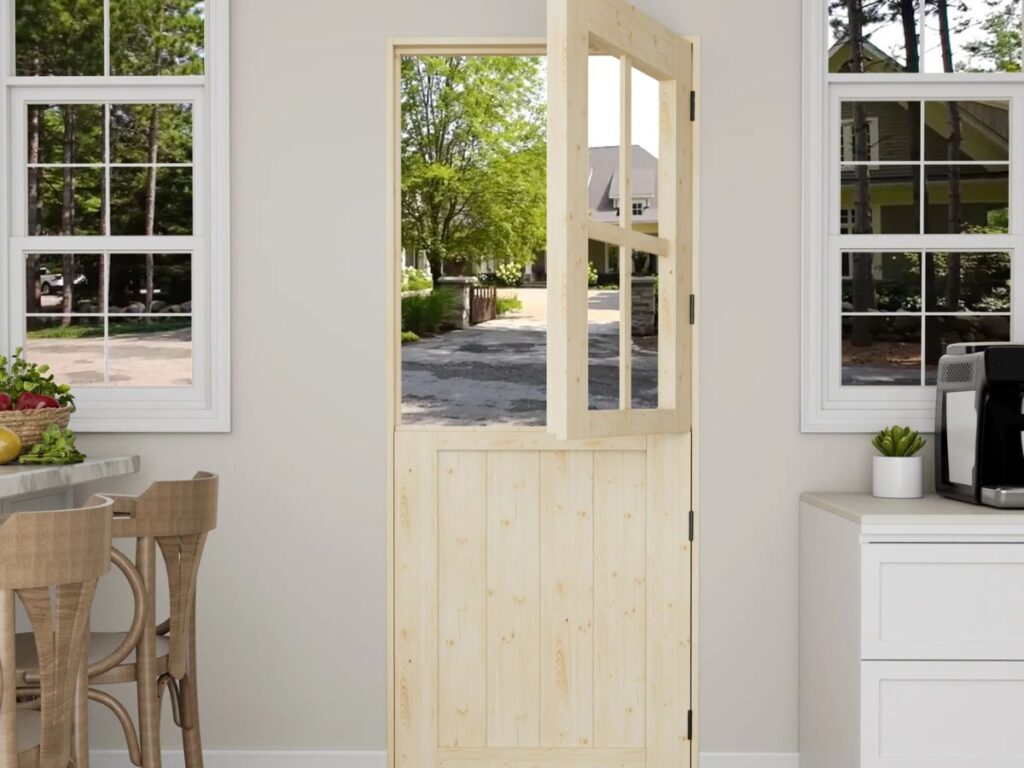
11. Final Tips Before You Choose
Picking the right commercial door can feel overwhelming at first. There are so many types, each with different features, materials, and uses. But if you take a step back and look at your space, your needs, and your priorities, the right choice starts to become clearer.
- Space Function: Start by looking at how the door will actually be used. Is it for guests, staff, or equipment? Will it face sunlight, humidity, or rough handling? A door that works in a quiet hallway might fail in a greenhouse or delivery zone.
- Maintenance Needs: Some doors need more care than others. Glass shows fingerprints, wood veneer needs gentle cleaning, and steel or FRP lasts longer with less upkeep. Choose a material that fits your maintenance capacity.
- Code Compliance: Your building may require fire-rated doors, panic hardware, or ADA-compliant entryways. If you’re unsure, check with your contractor or local inspector early it’s easier to plan ahead than correct later.
- Style vs. Strength: A good door should look right and work hard. Don’t choose based on looks alone, ask how it will hold up to traffic, moisture, and long-term use. Design matters, but durability matters more.
Choosing the right door might seem like a small detail, but it shapes how people move, feel, and stay safe in your space. Vallisco offers a wide range of well-built commercial doors that balance function, durability, and style for all kinds of projects.
Conclusion
You’ve just explored 10 of the best commercial door types each with a purpose, a place, and a lesson.
Remember that hotel project I mentioned at the start?
That new entrance changed more than looks. It changed how guests felt the moment they arrived.
Now it’s your turn.
What kind of door will make your space stronger, warmer, or safer?
Take your time, look at your needs, and start now.
If you want support, Vallisco can help you make the right call.
Learn More: Recommended Reads
Want to see more products? We’ve got plenty of options that might just be the perfect fit for you:
Still haven’t found what you’re looking for? Don’t hesitate to contact us. We’re available around the clock to assist you.


